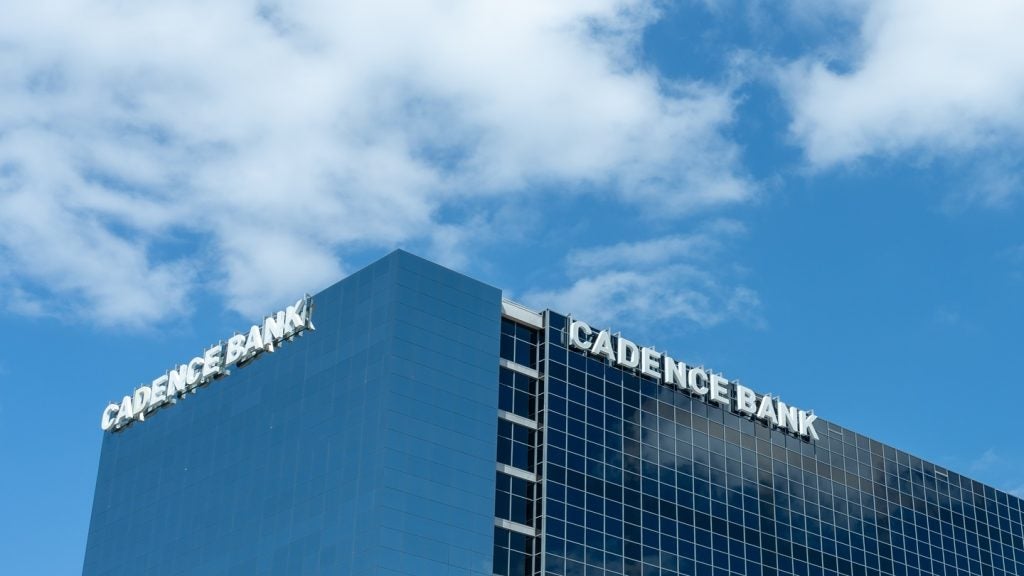Heinrich Haasis, president of
the German Savings Bank Association, the umbrella organisation
compromising 429 autonomous Sparkassen and 192 other institutions,
tells Duygu Tavan about the group’s investment strategies to
maintain its mighty status in Germany’s increasingly competitive
retail banking space.
 They have a
They have a
branch network of 15,700 units across Germany, serve 50 million
customers and, with a de-centralised banking approach via 429
autonomous savings banks, are physically closer to their customers
than rivals such as Commerzbank and Deutsche Bank.
But this de-centralised model is
what has put the mighty Sparkassen at a disadvantage of late.
Retailers such as Metro Group’s
Media Markt and Saturn, who specialise in selling electronic
devices ranging from freezers to cameras and DVDs, have taken
advantage of consumers’ need for convenience and are offering
consumer loans at the till.
Media Markt, for instance, has
partnerships with Santander Consumer Bank, as well as Commerzbank
and Deutsche Bank, which in recent years has led to a change in
consumer behaviour.
When advantages turn into
disadvantages…
How well do you really know your competitors?
Access the most comprehensive Company Profiles on the market, powered by GlobalData. Save hours of research. Gain competitive edge.

Thank you!
Your download email will arrive shortly
Not ready to buy yet? Download a free sample
We are confident about the unique quality of our Company Profiles. However, we want you to make the most beneficial decision for your business, so we offer a free sample that you can download by submitting the below form
By GlobalData Instead of having
Instead of having
to go to a branch, consumers can request an instalment loan at the
till – and only need to show proof of their household income.
Evidently, partnerships with retailers such as between Santander
and Media Markt are a lucrative source of income for banks. “But
retailers do not want to enter a partnership with over 400
autonomous institutions of course,” acknowledged German Savings
Bank Association (DSGV) president Heinrich Haasis.
“Our regional presence, which is
usually an advantage for the consumer business, is in this case a
disadvantage.”
Although the Sparkassen control
half of the German savings market, their market share in consumer
loans is only 25%.
Two major product launches
in 2011
Haasis admitted the Sparkassen had
lost some market share in the consumer loan segment – but with two
new products in the pipeline, they are targeting recovery of their
dominant position.
 The first new
The first new
product will be a new debit card, titled SparkassenCard Plus, which
will be introduced in the third quarter of the year, offering card
holders access to an individual loan.
This card is in response to the
loans offered by the retailers.
According to Haasis, the
SparkassenCard Plus is a novelty in the German banking sector.
“We hope the card will be adopted
by our customers and that it will help us compete [with the
retailers despite] our de-centralised model,” Haasis said.
However, the de-centralised model
will be reflected in the interest rate, as each Sparkasse will set
the rates autonomously.
With this card, the Sparkassen hope
to regain market share in the next two to three years in the
consumer loan segment, Haasis said. He argued that such loans from
retailers can turn out to be pricier than expected, but vowed that
the Sparkassen would offer fair conditions to consumers. In
addition, there will be consumer education campaigns, in particular
in print and on radio.
The second product investment this
year is the launch of a standard loan for all Sparkassen.
In order to compete with the
retailers and their banking partners, the Landesbank Berlin and
Deutsche Leasing, both part of DSGV, are going to form a new
entity, called S-Kreditpartner, to offer retail loans.
Each Sparkasse will be able to
choose whether they want to use this platform to offer a loan or
whether they want to issue the loan themselves.
“With this product, we are aiming
to attract a retail partner,” Haasis said.
“This has been a major problem for
the Sparkassen: Those retailers only want to work with one bank and
the Sparkassen could so far not offer one central loan service. But
we will solve the problem with the launch of the S-Kreditpartner,”
Haasis said.
Other investments at the Sparkassen
include the push into alternative delivery channels, although
Haasis emphasised that the branch network will remain the same.
Branches
According to the latest European
Financial Marketing Association and McKinsey report,
Face-to-Face: A €15-€20bn Multichannel Opportunity, retail
banking customers in Germany still use the branch more often than
their European peers.
Some 87% of people in Germany have
visited a branch in the past 12 month, compared with 79% throughout
Europe (see table, bottom right), the report noted. The
survey predicted purchasing processes would remain in the branch,
but highlighted that, conversely, cashless transactions have
already begun to take place via alternative delivery channels,
although the majority of cash transactions still do take place
in-branch as well.
So, for the Sparkassen, branches
are an integral part of a multichannel strategy and enable the
Sparkassen to pursue their strategy of being close to their
customers.
Haasis: “We want the most
satisfied customers”
 In the past three
In the past three
years, only 150 Sparkassen branches have closed – less than 2%
of the accumulated network of all Sparkassen. In the 15,700
branches, the Sparkassen employ about 130,000 customer advisers –
many of whom are of Turkish origin so Turkish customers, who often
do not speak German fluently, can get the help they need from a
native speaker.
“We want the customer to be able to
use all technical opportunities for their banking needs, as well as
the branch. We want to have the customers who are most satisfied
with their bank,” Haasis said. “We see consumers need more advice
than ever before – we live in a period where one has to plan ahead
for their pension, education etc, thus quality advisory service
in-branch will be [even] more important in the future,” Haasis
predicted.
Therefore, the DSGV also built a
centralised IT platform, which can be used by all Sparkassen; but
on-screen, the closeness to the consumer will remain as they will
see their local Sparkassen logo.
Contactless
 Often teased
Often teased
with claims of being a slow-starter in the alternative channels
segment, DSGV actually introduced its first mobile apps in July
2009.
The apps are compatible across the
whole smartphone range, including iPhones, the operating systems of
Windows and Nokia’s Symbian and Google’s Android, as well as the
iPod touch and iPad.
One app that Haasis liked to flag
up is the property finder app for the iPhone and iPod Touch.
“We expect a lot from this app,”
Haasis said, adding: “We hope customers will view a property via
the app and then go to their local Sparkasse.”
In addition, the Sparkassen
introduced contactless cards less than a year ago, for use at the
Bayern Leverkusen football stadium.
“The project is going well,” Haasis
said and added that the service has been rolled out to other
stadiums. “Now we are planning to roll out contactless cards across
Germany – but the retailers need to implement the appropriate touch
points for contactless cards [first].”
Confidence in
dominance
But, while the Sparkassen are
waiting for the roll out to accelerate, Haasis was confident that
they have set a trend already. “No other competitor has a
contactless card,” he claimed.
For Haasis, contactless cards are
the introduction of near field communication (NFC) payment
technology.
“We do have a project on this
topic, but have no particular dates to roll out NFC payments
services yet.” But for now, the battle for customer deposits
remains the main challenge in the German retail banking space,
according to Haasis.
With Deutsche Bank’s acquisition of
Germany’s largest retail bank Postbank at the end of 2010 and
Commerzbank’s acquisition of Dresdner (which it finalised in
mid-2010) – the private banks are hot on the heels of the DSGV in
the retail banking market.
Is this another cause for
concern?
Referring to Commerzbank’s campaign to attract more customers by
offering a free current account and a €50 ($70) cash incentive in
November, Haasis said:
“It is of course annoying when an institution that had to be
bailed out is now able to offer conditions which are not fair. But
we are very confident thanks to our high market penetration and
high customer numbers. We believe our advisory customer service
model and multichannel strategy will offer customers attractive and
fair prices and options.”







